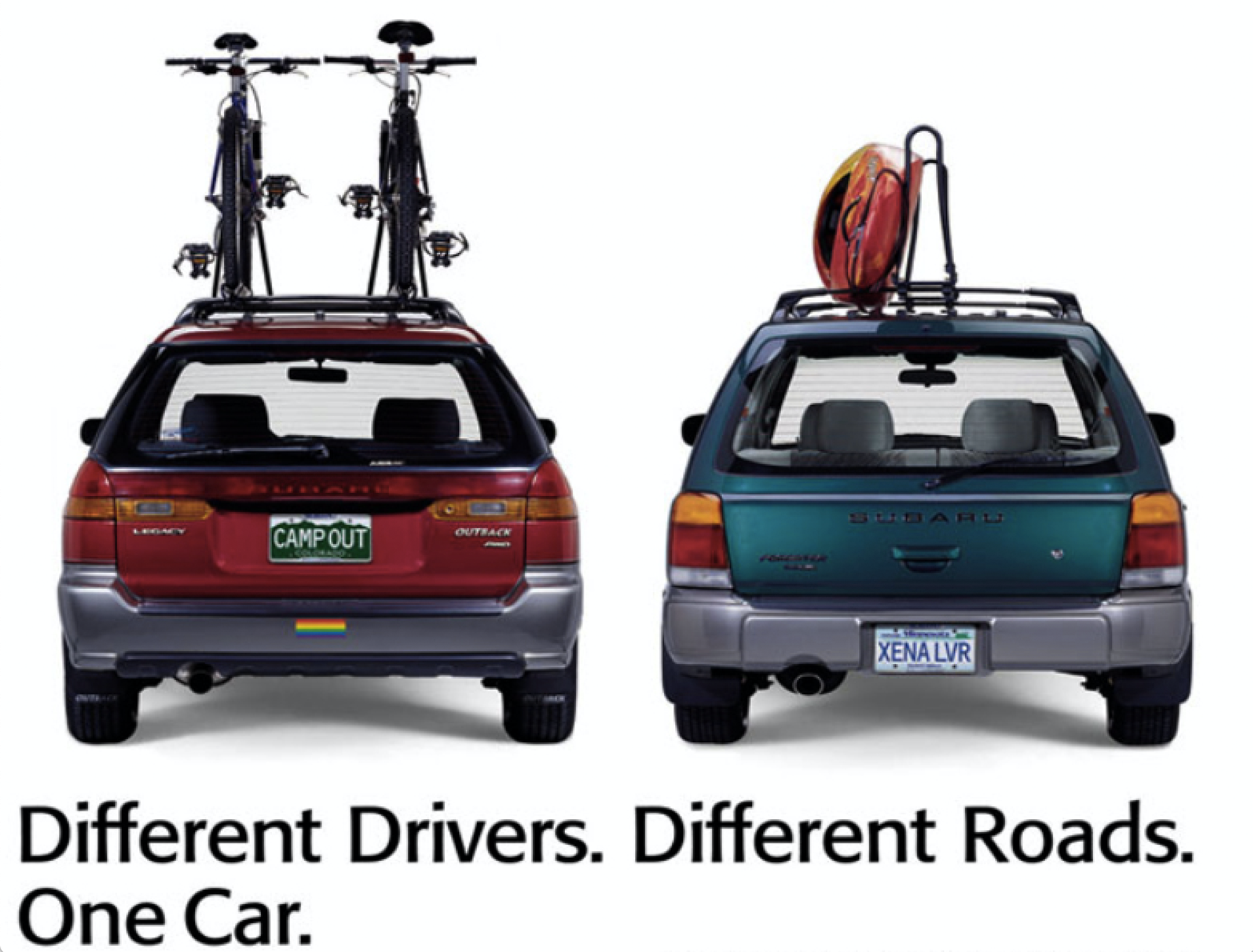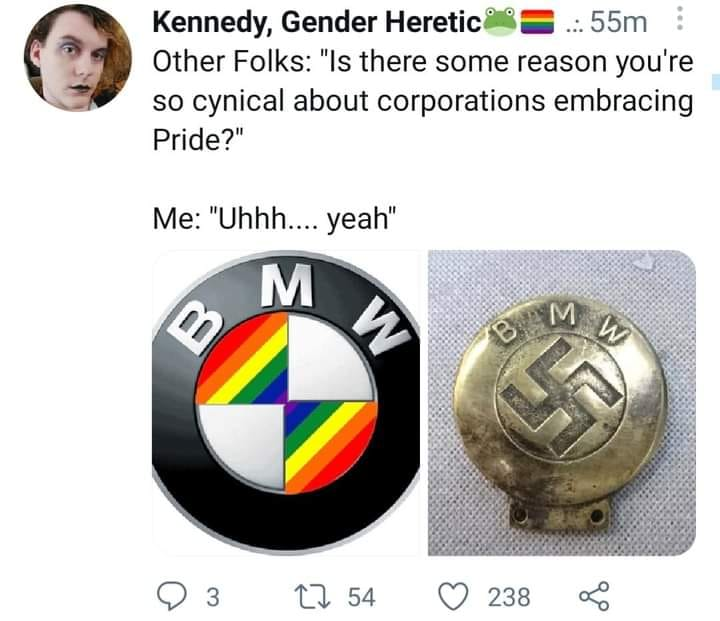Pride Month 2022 – how brands support LGBTQIA+ communities
Share this article

As every year in June, companies and brands publicly celebrate Pride Month to show their acknowledgement and support for LGBTQIA+ communities. This is a good time to talk about what can be done to authentically empower minorities. And to take a closer look at the actions of well-known companies and brands. So, before you change your Facebook logo to a rainbow one, read the article below.
It’s June 28, 1969. A group of armed policemen enter the Stonewall Inn, one of the most popular gay bars in New York City. They arrest the employees and take several people into custody. It is the third such raid on Greenwich Village gay bar in a short period. This time, however, people are not watching passively. Protests begin to rise. The riots set off the gay liberation movement and begin the 20th-century struggle for LGBTQIA+ rights in the United States – and the world. To commemorate these events, Pride Month takes place in June every year.
It’s 1978. Harvey Milk, one of the U.S.’s first openly gay elected officials comes up with the idea of creating a universal symbol of pride for the gay community. He takes this concept to Gilbert Baker, an artist who admits to being gay and a drag queen. Soon, Baker designs the first rainbow flag which consists of coloured stripes. Each colour standing for something particular:

Now the flag is widely accepted as the predominant symbol for the LGBTQIA+ movement. How has the flag changed over the years? Here you have its exact history:
Read some more statistics that are important in the context of Pride Month:
Throughout June, Pride Month 2022, you’re sure to see rainbows everywhere in real life and on social media. Profiles, logos, dedicated imagery, and more. Although, as you might suspect, things were not always so, nomen omen, colourful. Back in the 20th century, LGBTQIA+ communities were vastly underrepresented in the mass media broadcast. Whenever a brand decided on an advertisement showing homosexual men or women, or trans people, it was often considered bold or controversial even before it aired… But still, there were memorable gestures of genuine support which we consider worth bringing up and remembering.
Absolut was the first mainstream brand that bought full-page ads in gay media (The Advocate and After Dark). It was 1981. They featured the same ads they used in “straight” publications but committed major media dollars to target their gay audience. And the brand did not stop there. In 1986, it created a famous ad featuring the artwork of gay artist Keith Haring. It was a meaningful statement that presented the brand’s support to the LGBTQIA+ community. Throughout the years, the brand’s commitment persisted. In 2008, Absolut invited Gilbert Baker, the same man who created the rainbow flag, to cooperate. This time he prepared a special edition of the bottle.
In the early 1990s, Subaru noticed that their cars have become popular among single women. After careful insight, it became clear that a large number of them were homosexual women. Following through and based on this knowledge, Subaru decided to create a series of ads with such headlines as “Get Out and Stay Out” or “It’s Not a Choice. It’s the Way We’re Built.”, carrying an impactful double meaning. Another campaign depicted cars with hidden messages on their number plates: “XENA LVR” (“Xena The Warrior Princess”, the icon of the gay movement) and “P-TOWN (for the historically gay vacation spot Provincetown).” When Subaru researched this particular campaign, they found out that most of the people didn’t even notice the hidden meaning of the license plates. The homosexual audience, however, immediately decoded those messages which further strengthened their loyalty to the brand.

The very important thing here is that Subaru was the first brand to understand that building a relationship with minorities is not just about occasionally targeting them with advertising. They invested significant capital into LGBTQIA+ causes and actively supported their own employees on a regular basis, not only due to or around recurring Pride Months.
Today it hardly comes as a surprise that brands openly show support towards the LGBTQIA+ movement. However, some of them do it superficially, without any meaningful follow-up action. They treat Pride Month as an opportunity to improve their image, ranges, and revenue. There is even an industry term for this – pinkwashing – to help point out hypocrite brands. Let us however focus on good examples and practices, worthy of praise and support (expressed in customer decisions as well).
Let’s set some things straight (pun intended) – selling products and services is fine. It’s marketing, after all. However, if you can do business and bring knowledge, raise awareness, normalize diversity, and solve identity issues at the same time? Yes! All the more: yes!
There is an increasing number of glorious examples of campaigns that are respectful and important. All the more, they have been successful, too. Brands can use the reach and trust they have earned with their public to raise their voice in cases and for the brand values they treat as vital. Authenticity makes it even more important and drives the point home.
Microsoft calls out all the current hot topics: need for diversity & inclusion, climate change, violence and other challenges in its campaigns. It also presents Employees of the company as true ambassadors of the cause, as in the newest Pride 2022 film: Microsoft Pride 2022 | Pride Has No Borders, making it relatable, real and truly supportive to people who can still fear standing out in the pen with their identity.
Many examples of LGBTQIA+ marketing are not only eye-opening or interesting but may be deeply touching, too. Such is the case of a Gillette, partnering in Samson Bonkeabantu Brown’s, a transmale artist’s first shaving lesson given to him by his father. An important ritual, a gesture of welcoming into the new world and reality so deeply craved, might easily bring tears into one’s eyes.
The same is in the case of Pantene, presenting a story of culture and tradition intersecting with gender identity through their focus and at the same time a very strong symbol of femininity: hair. The story presents a Mexican celebration of a girl’s becoming a woman, a long-awaited Quinceañera, and how trans women may be excluded from this cultural milestone. How families can grow apart – and then grow strong together. Launched just in time for Trans Visibility Day (March 31), it tells a single, powerful story outlining a much broader issue: including trans or gender fluid people into traditions strongly set and up until now reserved to binary culture.
As mentioned before, the LGBTQIA+ community and people are highly sensitive and quite allergic to the pinkwashing phenomenon. They are very adept at discovering brands’ blunders. For instance, one of the examples of shallow actions on behalf of global brands is BMW. It has changed its logos on all social media accounts – except those active in the Middle East. This has caused controversy as for many Internet users it is a sign of evident profit-driven calculating and riding the Pride wave. This lets the brand face other criticisms. Some people reproach its past, specifically its links to the Nazis.

In our opinion, however, this is taken too far. The people who make it up now have no influence on its history and apparently want to dissociate themselves from what was and try for better. Not perfect yet? It is worth appreciating the effort – and constructively correcting what can be improved. If it serves good causes, brands do have the right to pivot, change their values and conduct a rebranding.
Want your brand to be truly supportive for LGBTQIA+ people? You should always remember to do a few simple things that require a little effort on your part.
In Admind we have taken three parallel paths in support of minorities through our social impact policy. The first is financial assistance to organisations such as Kampania Przeciw Homofobii – a foundation against homophobia, Federacja Znak Równości – an association supporting the LGBTQIA+ community, Miłość Nie Wyklucza – an organisation working to bring marriage equality to same-sex couples and to build the LGBTQIA+ community in Poland.

The second path leads to improving diversity, equity, and inclusivity within our company and team. For this purpose, we have partnered with the Diversity Hub, which specialises in training and advising companies on diversity and inclusion. As a part of the collaboration, they produced and ran a survey for our employees on diversity topics to see how it‘s represented and respected within our company. Based on that, they conducted a webinar for us about inclusive leadership – what practices to use in leading teams, referring to not only the LGBTQIA+ community but also ethnic or religious minorities. Through this process, we have updated and strengthened the internal set of D&I outlines, presented to all the newcomers joining our team during the onboarding process.
We also held two other internal training sessions for our employees. One was on diversity and inclusive design, the other on inclusive language. We decided that we need to pass this valuable knowledge on as well as update it constantly. We hold the webinars and training on a regular basis and work on expert collaborations. They allow us to broaden the pool of possibilities to gain quality knowledge. Recently we also had a chance to host Marie van Driessche during one of our webinars on inclusive design.
The third path is to educate our customers, who in turn employ thousands of people around the world. This is why we believe that as a branding agency we have a high potential to create social impact, especially by collaborating with other companies. One of the examples of our recent activities in this field is the dedicated “How to be LGBTQ+ inclusive in communication” webinar for ABB or communication about Pride Month. When preparing materials and branding strategies for our clients, we always ensure that they include representation of the LGBTQIA+ community. We encourage you to follow these good practices and put conscious branding into real actions.